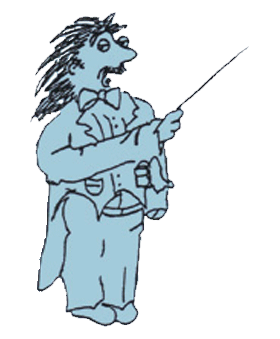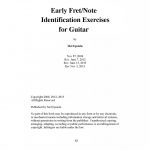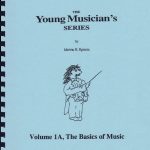*** Practice between lessons is essential to making progress ***
Here are some suggestions to help you get the most out of your music practice.
1. Practice regularly. Repetition of effort is the bottom-line on what will most improve your playing skill. As you want practice to be a routine part of your life, I most strongly recommend that you establish a regular time for your music practice and that you stick to it. If it helps, you can create a physical chart and then mark off each time you’ve actually practiced as planned. After you’ve kept up with your practice schedule for a bit, you will find that it will simply seem normal and right to go and practice at the scheduled time.
Having a chart can also be helpful in hindsight to see how well you’ve actually been doing in keeping up the practice. Behavior patterns might be discernable from a chart like this, which can help you improve your efforts.
2. Practice frequently. The more often you practice, the better. Try to practice daily. If that’s not realistic, try for 5 days per week. As mentioned above, setting a regular time for practice will help ensure that it happens.
3. Make your practice time count. Try to work efficiently and continuously during each practice session. Your investment of time will bring you better results if you can genuinely focus your attention on your musical material during the time that you are practicing it. Practice with focus is more important than merely practicing to satisfy a measured amount of time – although you should assume a bare minimum of 20 minutes per sit-down. A half-hour to forty five minutes is a better standard.
4. Practice toward exact results. This means that you should concentrate your efforts towards the specific improvement you are trying to achieve. This might be to find the correct keys or frets for the notes being played. This might be to use the correct fingers for the keys or strings being played. This might be to hold all notes for just their correct lengths of time.
5. Narrow the scope of your efforts, as needed, so as to make real progress. This would apply especially when first starting a piece of music. It also would apply when learning to play new notes or chords, when tackling a difficult portion, when the musical key changes (goes into a different set of notes), when increasing the tempo (speed), when working in a different area of the keyboard or neck and the like.
Ways to narrow the scope include: working at a slower speed, practicing one hand at a time, practicing with both hands but within a short region (such as a single measure or two or one phrase or line), working on one aspect at a time (such as first notes, then fingers, then timing, then expression), limiting your efforts to a small number of pieces or exercises.
Be aware that it can be useful to practice a passage of music in reverse order from how it is actually written. Playing the passage alternately backwards and forwards really helps to get to know the notes in their written sequence.
Also, playing all of the notes in an area, such as a measure, at one time, clarifies exactly which notes, fingers and keys/frets are involved in performing that note group. Alternately playing all notes as one block chord and as written helps to establish finger usage and relative distance.
6. Practice both to correct mistakes and to perform a piece of music. Separate these two efforts but do both. You will move through the piece better and quicker this way.
7. Become skilled at playing the music correctly and as written, not at performing errors. Get to know the notes exactly and only as they lie on the page, not as you have imagined them to be.
8. Gradually increase the complexity of your efforts. As you gain more control over each of the different factors in playing a particular piece of music, work to merge them together.
9. Work in expression, once the mechanical aspects are under control. Expressive elements include dynamics (changes in volume level), tempo (speed), articulation (connected, distinct, or chopped sounds), held tones and such.
10. Separate improvisations (made up notes) from playing the actual written material. Improvising is a very desirable activity but it shouldn’t be confused with the ability to play the actual written material. Make sure that you can play what’s written as it appears in front of you before you discard it for your own personal version.
11. Record your playing. By recording what you are working on, you can then free yourself from the work of playing the piece and simply listen to what you’ve done. This will enable you to hear what’s excellent in your work and what needs improvement.
12. Remember that the material that you are practicing is still and always a piece of music. Try to keep this in mind as you hack away at it.
13. Include some time for pleasurable playing. In addition to your practice work, give yourself time to play pieces that you learned earlier and still enjoy. Try experimenting with variations to these known pieces.
5/1/01
Revised 1/10/12






